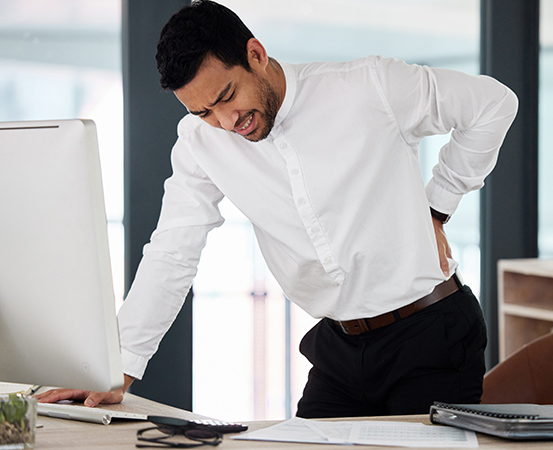
Most of us would like to imagine a life free from all kinds of pain — stinging sunburns, throbbing headaches, aching joints or worse. But the complete inability to feel pain (not just pain tolerance) is not a great advantage.
“Pain protects us and is necessary for our survival,” says Dr Ashna Pinto, a cosmetic dermatologist from Narayana Aesthetic Centre, Bengaluru. “When you touch a hot stove, you recoil in pain and thus avoid getting a burn that could be very dangerous. The throbbing of your broken foot tells you to stay off it until it heals, so you don’t do more damage. Without those strong signals, we’d all be in trouble.”
Dr Pinto explains that each person’s pain tolerance or pain perception is unique and is conditioned by a mix of biological and psychological factors. It is manifested in two steps. First, biologically, through the injury (bruising or burning), then through the brain’s perception of the injury, which tells us to stop everything and focus on it or shrug it off as minor and keep going.
Then there are people who suffer from the inability to feel pain. The New York Times featured 71-year-old Jo Cameron who has never felt pain or anxiety her whole life due to a rare genetic mutation. Childbirth felt like a ‘tickle’ to her, and she relied on her husband to alert her when she was bleeding, bruised or burned.
Dr Pinto recalls the case of a six-year-old girl who chewed off half her lip and burnt off her fingertips because she could not feel any pain. “It was tragic, but there is simply no treatment for that condition,” she says.
Factors that influence pain tolerance
Studies have shown that biological, psychological and sociocultural factors cause vast differences in post-operative pain experienced by people. This holds true for two individuals who have the same physical conditions and state of being. One could find pain from the same stimuli merely an annoyance while it would be sheer agony for the other.
“I’m constantly surprised by how some people find certain procedures unbearable while others can sit through without flinching even though we use identical treatments,” says Dr Pinto, adding that having high pain perception is not necessarily a good thing because it can result in patients not feeling, or ignoring, their body’s warning signals that something is wrong.
For instance, people who are less sensitive to pain may be at increased risk of having a ‘silent’ heart attack because they may miss the classic symptoms of a heart attack.
Choice of painkillers
Pain is a highly complex, individualised experience. Even with the availability of various modern methods of testing pain, it is still difficult to accurately evaluate and take measures to manage it.
Experts say that understanding the root of the pain can help in managing it with the right medication; a specific drug might work better for some. “People might require different pain medications when hormone levels fluctuate through life,” elaborates Dr Pinto. “A person’s sex does not always fit neatly into male/female categories but is determined by a wide range of factors like genetics, anatomical development and hormone levels, each of which might affect a person’s needs in pain therapy.”
Will people with low pain tolerance be able to increase that pain threshold through conscious effort or conditioning?
Studies suggest that people can change their pain tolerance by modifying their perception of pain much like professional athletes who learn to ‘embrace the pain’ and push their performance levels. People can also distract themselves in certain circumstances and change their perception of pain.
“There may also be some ways to increase pain tolerance without causing any drastic changes,” says Dr Pinto. “Regular aerobic exercise, moderate resistance training and maybe even circuit training could increase pain tolerance in otherwise healthy people. The practice of yoga may also make a person more aware of their mind and body and may decrease some responses to pain.”
Takeaways
A person’s tolerance to pain is unique and conditioned by a mix of biological, psychological and sociological factors.
- There is no one-pill-fits-all drug for pain management since the root as well as the perception of pain are different for different people.
- People can change their pain tolerance by conditioning, modifying their perception much like how athletes train to push performance through pain.

















